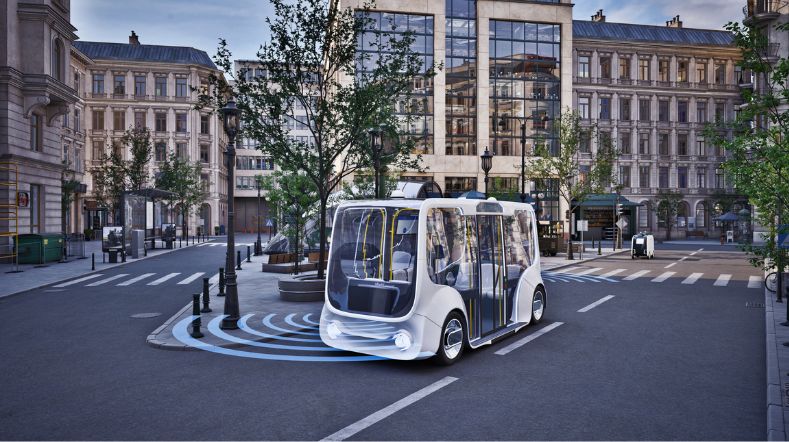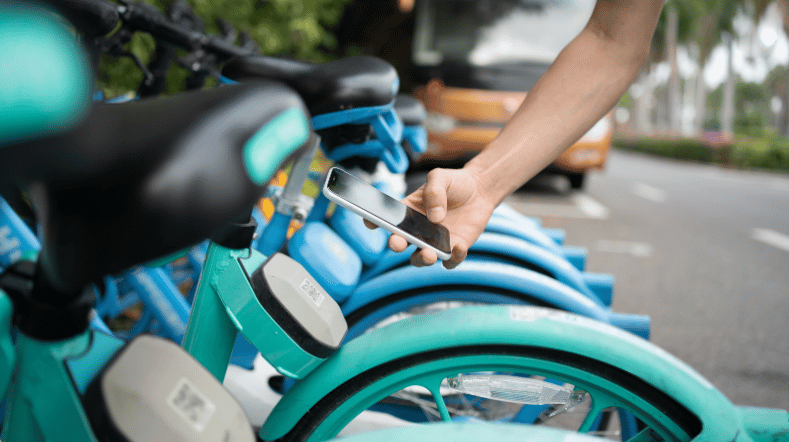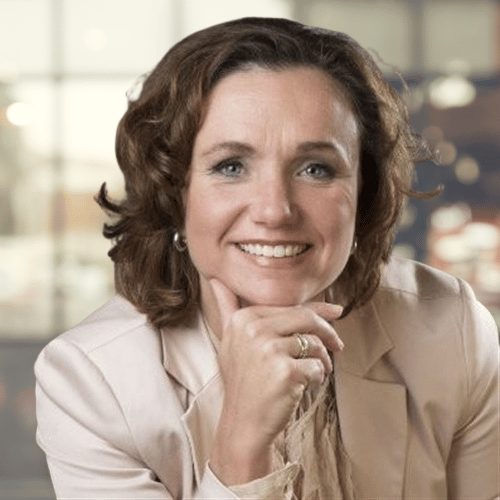
How do we steer automated driving in the right direction?
Our mobility must be cleaner, safer and more efficient in order to keep cities livable and accessible. Can automated driving contribute to this? Through in-depth knowledge and models, we help companies and public authorities to make the right choices now.
It's the middle of the night just outside Vlissingen in Zeeland. The road is deserted but two headlights are approaching in the distance. It's a truck that seems to have driven straight out of a science-fiction film. The most striking detail: it doesn't have a cab and therefore no driver either. Slowly, the truck disappears back into the night.
Not science fiction
This is not a scene from a film but rather a trial of automated trucks in Zeeland. At night, self-driving trucks transport onions over a fixed route of three kilometers to a distribution point. The technology has evolved rapidly – perhaps faster than societal acceptance, according to the region's concerned reactions on social media.
What is automated driving?
When it comes to automated driving, many people have the impression that vehicles will completely take over all tasks from the driver. That the driver can sit in the back seat with a laptop and let the technology take care of the rest. It remains to be seen when and if this highest level of automated driving (also known as level 5) will become a reality. This is a particular challenge in busy cities. The fact is that drivers can already leave an increasing number of tasks to their cars. Levels 1, 2 or even 3 (in which cars can park themselves, keep a good distance or continue driving within their own lane) can already be seen around us. The automated driving domain is growing rapidly.
Why do we want it?
Automated driving is an important development in the ambition to make mobility safer, more sustainable and more efficient. Road capacity can be better utilized by allowing vehicles to drive closer together. Traffic flows better and more evenly, reducing consumption. The absence of human error makes automated driving safer. But these are the benefits in an ideal situation in which all vehicles can drive fully autonomously.
Realistic scenarios
In practice, it will not suddenly be possible to replace our entire range of road vehicles with self-driving cars. For this reason, we are doing a lot of research into more realistic scenarios, such as if 20% of cars drive in an automated manner. Via pilots, we're measuring how motorists react to automated vehicles. Do they keep extra distance, for example, because they have less confidence in the technology? As a result, more space would be needed on the roads instead of less. We incorporate all of these results into realistic models that provide important input to public authorities (in particular) in order to formulate policy and preconditions for automated driving.
New mobility modeller
We have developed an advanced model for this purpose: the New Mobility Modeller. This allows the mobility impact of technologies – including automated driving – to be simulated with great accuracy for different stages of development. For autonomous driving, this varies from the current driver assistance systems (ADAS) to fully self-driving cars at level 5. The New Mobility Modeller calculates the quantitative impact of future mobility concepts based on costs, demand for different modes of transport, road capacity and travel time, for instance. In this way, we provide insights into the expected congestion on the road and the modal split. This shows how many people are using cars, public transport or bicycles. With this model, public authorities can explore various scenarios in a timely manner and adjust their policy accordingly.
More or less traffic jams?
A frequently asked question is whether automated driving will reduce traffic jams. An impact study that we carried for the Transport Authority Amsterdam, recently showed that the introduction of autonomous vehicles could actually increase traffic volume. One of the possible causes may be that the fully self-driving car is an attractive alternative for train passengers who want to continue working on the road. The government could therefore encourage public transport to compensate for this. Ultimately, human needs such as comfort, affordability and speed determine the impact of new technologies. These factors are included in the New Mobility Modeller.
Societal impact
A next step which we are working on is to be able to define the model at a neighbourhood level. By linking it to postcode areas, public authorities can see the social consequences for specific neighbourhoods. Certain neighbourhoods may be disadvantaged by automated driving, for example. What are the consequences for air quality, social inclusion and equality within neighbourhoods? The insights have remained invisible until now.
Get inspired
Don't jump on every innovation bandwagon: TNO's framework to help cities make smarter mobility choices


Urban space


Zero emission urban mobility


How governments can make MaaS work to societal goals


With Urban Strategy, TNO connects with innovative U.S. West Coast in San Diego


